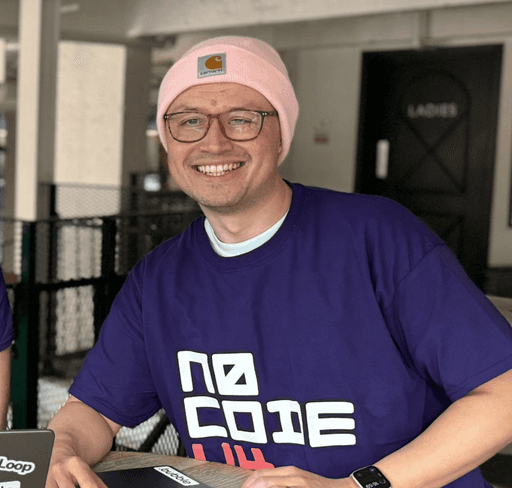Apr 18, 2025
What Do Connections Mean on LinkedIn? A Complete Guide
Learn what LinkedIn connections really mean, how to build them wisely, and why they matter for career growth, networking, and new opportunities.
A LinkedIn connection isn’t just another name on your contact list. It represents a professional relationship, whether it’s someone you’ve worked with, met at an event, or connected with over shared goals. These connections form the foundation of your network and can lead to mentorship, collaborations, or new opportunities.
But is it just about numbers? Some treat LinkedIn like a game, aiming for hundreds or even thousands of connections. Yet, the value of a connection goes far beyond the count. It’s about building relationships that can open doors, spark ideas, or help you land that dream job.
So, what do your connections really say about you, and how can they shape your career? Let’s jump into the meaning behind those digital handshakes.
Understanding Connections On LinkedIn
Connections on LinkedIn represent your professional network, encompassing colleagues, mentors, clients, and industry contacts. Unlike casual social media followers, these connections are deliberate links designed to enhance your professional presence. Every connection you form adds value by broadening your access to knowledge, opportunities, and industry insights.
Direct or 1st-degree connections are individuals you have personally linked with on the platform. These connections permit direct messaging and often include access to their contact details. Expanding this base strategically can boost your visibility and credibility within your field. Each new relationship strengthens your professional web, potentially leading to collaborations or career advancements.
Engagement grows as your network widens; a larger network increases your post visibility and reach. Second and third-degree connections, though indirect, also hold value for uncovering new opportunities. By nurturing meaningful relationships, you transform LinkedIn into a dynamic tool that supports both career progression and business growth.
Types Of LinkedIn Connections
LinkedIn provides a structured way to classify your professional relationships, dividing them into connection tiers. Each type signifies different levels of accessibility and interaction.
First-Degree Connections
First-degree connections represent your direct LinkedIn network. You establish these by sending or accepting a connection request. Once connected, you can message them directly through your inbox, access their shared contact details, and view their updates.
LinkedIn allows up to 30,000 first-degree connections, creating extensive opportunities for networking. These connections are crucial for building strong professional relationships and immediately interacting with your contacts.
Second-Degree Connections
Second-degree connections are individuals connected to your first-degree network. Though not direct contacts, they form a valuable network extension, visible by the shared mutual connections on their profiles.
To interact, you must send a connection request or, if you have LinkedIn Premium, use an InMail message. These connections provide potential professional introductions and insights into mutual connections for easier networking.
Third-Degree Connections
Third-degree connections extend beyond your immediate network, linked through your second-degree contacts. Though more removed, they serve as avenues for network growth. Connecting requires sending a direct request.
If you hold a Premium account, InMail messaging becomes an option. Building relationships with third-degree connections unlocks opportunities and broadens your professional reach significantly.
Followers Vs. Connections
Connections establish mutual professional relationships, with both parties interacting and sharing updates. In contrast, followers see your public content without forming a direct link. LinkedIn allows unlimited followers but limits you to 30,000 connections.
While connections enhance engagement and deeper relationships, followers help amplify your content and expand visibility. Thought leaders often use the "follow" setting to grow their audience without requiring direct interactions.
Benefits Of LinkedIn Connections
LinkedIn connections serve as the foundation of a strong professional network. They enable you to unlock opportunities and leverage relationships for career growth.
Networking Opportunities
Connections on LinkedIn help you create meaningful networking possibilities. By linking with professionals across industries, you position yourself to discover collaborations, leads, and global opportunities.
Expanding your network often uncovers mutual contacts in your field, facilitating introductions that might otherwise be hard to establish. For example, LinkedIn Open Networkers (LIONs) intentionally connect broadly to maximize their reach, providing insights into new sectors and career paths.
Professional Development
LinkedIn connections positively impact your career trajectory. Building a robust network signals credibility, as others recognize and endorse your skills. For instance, endorsements and recommendations from connections act as public affirmations of your expertise, increasing your profile’s attractiveness.
Also, access to shared content, industry groups, and discussions enhances your knowledge base, fostering the ongoing growth of essential skills and professional capabilities.
Increased Visibility
A well-filled network amplifies your visibility on LinkedIn. When your connections engage with your posts, this activity gets pushed to their networks, broadening your reach.
Profiles with larger networks are prioritized by LinkedIn’s algorithm, improving placement in search results and recommendation tabs. Visibility also boosts job-seeking potential, making recruiters more likely to find and consider your profile when scouting for candidates.
How To Effectively Build LinkedIn Connections
Expanding your LinkedIn connections strengthens your professional network and enhances your presence in your field. Focus on creating meaningful relationships through personalized interactions.
Sending Personalized Connection Requests
Make your connection requests stand out with personalization. Reference shared experiences, mutual connections, or relevant interests when reaching out. For instance, mention attending the same event or participating in the same group.
Demonstrating genuine interest increases the chances of acceptance. Include a clear reason for connecting, emphasizing mutual benefits. Avoid generic text like “I’d like to add you to my network.” Crafting a specific, thoughtful message shows professionalism and encourages engagement.
Engaging With Posts And Articles
Engaging with content builds visibility and rapport. Interact meaningfully by liking, commenting on, or sharing relevant posts. Thoughtful comments, like insightful questions or agreeing with key points, resonate more than generic remarks.
Engaging consistently keeps you on a person’s radar and sets the stage for connection requests. Following influential professionals also allows you to stay updated on industry trends while creating organic opportunities to interact with their content.
Joining Relevant Groups
Join industry-focused LinkedIn groups to network with like-minded professionals. Active participation, such as contributing to discussions or sharing valuable content, demonstrates expertise and fosters connections.
Groups bridge communication gaps, enabling direct interactions with members who share similar interests or career goals. Some groups also allow free messaging, bypassing the need for a connection request. Establish yourself as a valuable contributor, and connections will grow from these interactions.
Conclusion
LinkedIn connections play a powerful role in expanding your professional network when built with purpose. It’s not just about growing your contact list; it’s about creating meaningful relationships that lead to new collaborations, shared knowledge, and long-term opportunities.
Staying active, engaging with your network, and sharing thoughtful content can keep those connections strong. To help with that consistency, check out Typoro, which is a tool that makes it easy to write and schedule posts that spark real conversations and strengthen professional relationships.
Start Your 7-Day Free Trial
Experience the full power of Typoro with a 7-day free trial. Create, optimize, and schedule LinkedIn posts effortlessly while tracking your growth. No commitment. Cancel anytime.
Credit card required. Cancel at anytime.









